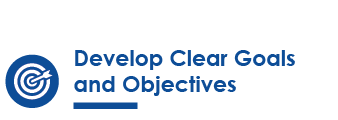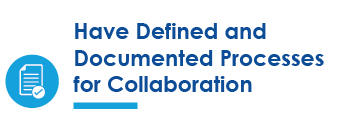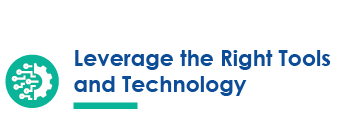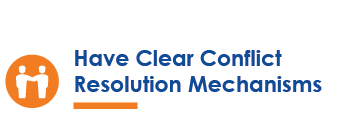In the age of agile methodologies and remote work, mastering cross-team collaboration is pivotal in driving innovation and ensuring that all parts of a company are working towards the same objectives. Gone are the days when individual departments could operate as isolated islands of productivity. The challenges and opportunities of the modern business world are far too complex for any single group to shoulder alone.
Effective cross-team collaboration dismantles barriers, facilitating a fluid exchange of ideas and information among different departments. A more collaborative approach not only enhances problem-solving capabilities and creativity but also cultivates an environment of inclusivity and mutual respect. By harnessing diverse skills and viewpoints, organizations can swiftly respond to market shifts, uncover opportunities, and sustain a competitive edge.
Why Cross-Team Collaboration Matters More Than Ever
Cross-team collaboration has become the hallmark of a high-performing organization. Data from a Harvard Business Review study showed that over the past 50 years, workplace collaboration has increased by at least 50% (Cross), and it shows no signs of slowing down now. Modern business challenges seldom have isolated, single-department solutions – they demand a collective that’s more than the sum of its parts.
Companies that prioritize collaborative working environments are not only 30% more innovative but also demonstrate at least a 36% improvement in performance according to a Frost & Sullivan study (Roopam).
Cross-team collaboration goes beyond individual team projects, shaping the very fabric of organizational structure and operation. The advantages of collaborative team efforts are extensive:
- Increased employee engagement and satisfaction
- Enhanced creativity and innovation
- Improved problem-solving capabilities
- Greater adaptability to change
- Stronger relationships between team members
- Optimized use of resources and expertise
- Overall performance improvement
By comprehending the intricate network of team interactions, businesses can pinpoint inefficiencies, optimize processes, and enhance their operational efficiency.
Cross-Team Collaboration Best Practices
Here are 12 practical and actionable ways to improve cross-functional team collaboration to bridge the gap between organizational intent and daily action. We have intentionally adopted an inclusive approach to best practices, recognizing that while some may appear straightforward, their collective implementation is crucial for realizing the full potential of cross-team collaboration.
 |
Actionable Tips to Set the Direction |
| Setting clear, specific goals is essential for cross-functional teams working together. It ensures everyone is moving in the same direction towards common targets, thereby supporting the organization’s overall objectives. When objectives are distinct and universally understood, teams can better allocate resources, prioritize tasks, and measure progress, ensuring that each team member contributes effectively towards the collective accomplishment. |
|
 |
Actionable Tips to Optimize the Power of Documentation |
| Documented processes serve as a guide for effective teamwork, keeping everyone aligned and working towards the same objectives. They promote consistency and accuracy and ensure valuable lessons are captured and retained from previous projects. As teams continue to collaborate effectively and refer to past processes, they become more efficient and equipped to handle new challenges. By documenting processes, teams are better prepared to handle any challenges that may arise, increasing their chances of success and creating a more efficient and effective cross-collaborative environment. |
|
 |
Actionable Tips for Defining Roles |
| When everyone on a team knows exactly what their job is and how it ties into the bigger picture, teamwork flows smoothly. This clarity prevents overlap in duties, eliminating friction among team members and improving efficiency. Clear roles empower individuals to take ownership of their tasks, resulting in improved outcomes and a heightened sense of responsibility. This setup not only boosts the quality of work but also strengthens each team member’s commitment to shared goals. |
|
 |
Actionable Tips for Creating a Decision-Making Culture |
| Simplifying decision-making processes in a team setting cuts down the time it takes to go from idea to action, enabling more agile responses when facing new challenges or opportunities. When decision-making is efficient, teams can switch gears without missing a beat, adapting swiftly to fresh insights or shifting environments. This kind of nimbleness is crucial, especially when different viewpoints and perspectives could potentially drag things out. |
|
 |
Actionable Tips for Choosing the Right Tools |
| Technology should be a tool, not a hindrance. When leveraged correctly, it can enable faster, more effective cross-functional collaboration. According to McKinsey Global Institute (MGI), improved communication and collaboration through social technologies could raise the productivity of high-skill knowledge workers – including managers and professionals—by 20 to 25 percent (The social). Choosing the right technology platforms and tools is integral to enhancing cross-functional collaboration. Ideally, these technologies should be user-friendly, accessible, and versatile enough to support a diverse range of tasks and communication styles. |
|
 |
Actionable Tips for Onboarding and Training |
| Providing a structured framework for onboarding and continuous training maximizes training effectiveness, promotes innovation, and builds a more cohesive and adaptive organizational culture. It ensures that all team members, irrespective of their functional backgrounds or roles, possess the necessary skills and knowledge to contribute effectively towards collective goals. This alignment is crucial in navigating complex projects and achieving long-term success. |
|
 |
Actionable Tips for Nurturing Leadership Excellence |
| Strong leadership is vital for promoting cross-team collaboration. Team leaders should not only exemplify collaborative behavior but should also be trained to facilitate cross-team collaboration. Effective leaders possess the leadership skills to motivate diverse team members, bridge generational gaps, and create a shared vision that aligns with organizational goals. |
|
 |
Actionable Tips for Clear Communication |
| Regular, open communication is the lifeblood of any collaborative team. When communication methods are clear and universally understood, it streamlines the flow of information, ensuring that all team members have a consistent understanding of project statuses, responsibilities, and deadlines. |
|
 |
Actionable Tips to Encourage Knowledge Sharing |
| A company culture of openness that encourages team members to share knowledge with other team members promotes continuous learning and improvement, enhancing collective intelligence and innovation. Team members benefit from the diverse knowledge and skills of their colleagues, sparking new insights and innovative solutions. When an organization commits to sharing knowledge, it paves the way for shared success. |
|
 |
Actionable Tips for Encouraging Social Interactions |
| Encouraging social interactions among team members builds stronger interpersonal relationships which are the foundation for effective teamwork. When team members engage with each other socially, they develop a deeper understanding of each other’s personalities, strengths, and working styles. These informal interactions can improve communication, empathy, and mutual respect within the team. Social connections created through team-building activities, casual meet-ups, or virtual coffee chats can significantly enhance team cohesion and morale, making the collaborative environment more engaging and productive. |
|
 |
Actionable Tips for Constructive Conflict Resolution |
| Establishing procedures for resolving disagreements minimizes disruptions and maintains harmony. Conflicts are inevitable. It’s how they’re managed and resolved that can strengthen or weaken collaboration. When teams collaborate, conflicts may arise due to differences in opinions, priorities, or approaches. Having clear conflict resolution mechanisms ensures that these disagreements are addressed promptly and effectively before they escalate into major issues. |
|
 |
Actionable Tips to Promote Accountability |
| Promoting transparency and accountability within teams not only clarifies roles and responsibilities but also boosts morale and engagement. Team members who feel accountable are more likely to be invested in the outcomes of their work, which leads to higher productivity and satisfaction levels.
Regular check-ins and reviews provide a platform for teams to discuss challenges, identify areas for improvement, celebrate successes, acknowledge individual contributions, and adjust strategies in real-time to meet evolving project demands. This practice reduces the risk of tasks falling through the cracks and ensures that all team members are moving in the same direction, with a clear understanding of their roles and expectations. |
|
A Final Thought
The benefits of effective cross-team collaboration are evident, and the best practices outlined above provide a roadmap for organizations seeking to optimize team performance. Your organizations can start by implementing a few of these practices, and watch as your teams become more cohesive, innovative, and successful. The effort put into improving collaboration will undoubtedly be reflected in your organization’s overall performance and success.
How Optimus SBR Can Help Your Organization Ensure Successful Cross-Team Collaboration and Enhance Organizational Alignment
We specialize in learning and development solutions that promote sustainable growth and success. Our team of experts provide tailored programs to enhance cross-team collaboration and ensure organizational alignment. Our approach is rooted in understanding the unique challenges faced by our clients and working closely with them to create the best solutions.
Optimus SBR’s Learning & Development Practice
At Optimus SBR, we know first-hand that building a great team is about attracting, retaining, and engaging top talent. We partner with clients to create scalable, targeted, experiential learning programs that enhance people leadership, employee engagement, team collaboration, and performance results.
If you’re a leader looking to increase cross-team collaboration and enhance organizational alignment, please feel free to connect and learn more about opportunities to partner with us.
Giselle Kovary, Head of Learning & Development Practice
Works Cited
Rob Cross. “Collaborative Overload.” Harvard Business Review, 2021, https://hbr.org/2016/01/collaborative-overload.
Roopam Jain. “Future of Collaboration in the Workplace – What’s on CIOs’ Minds.” Frost & Sullivan, May 18, 2021, https://www.frost.com/frost-perspectives/future-of-collaboration-in-the-workplace-whats-on-cios-minds/.
“The social economy: Unlocking value and productivity through social technologies.” McKinsey Global Institute, July 2012, https://www.mckinsey.com/industries/technology-media-and-telecommunications/our-insights/the-social-economy.





Industry Insights
Service Insights
Case Studies
Company News